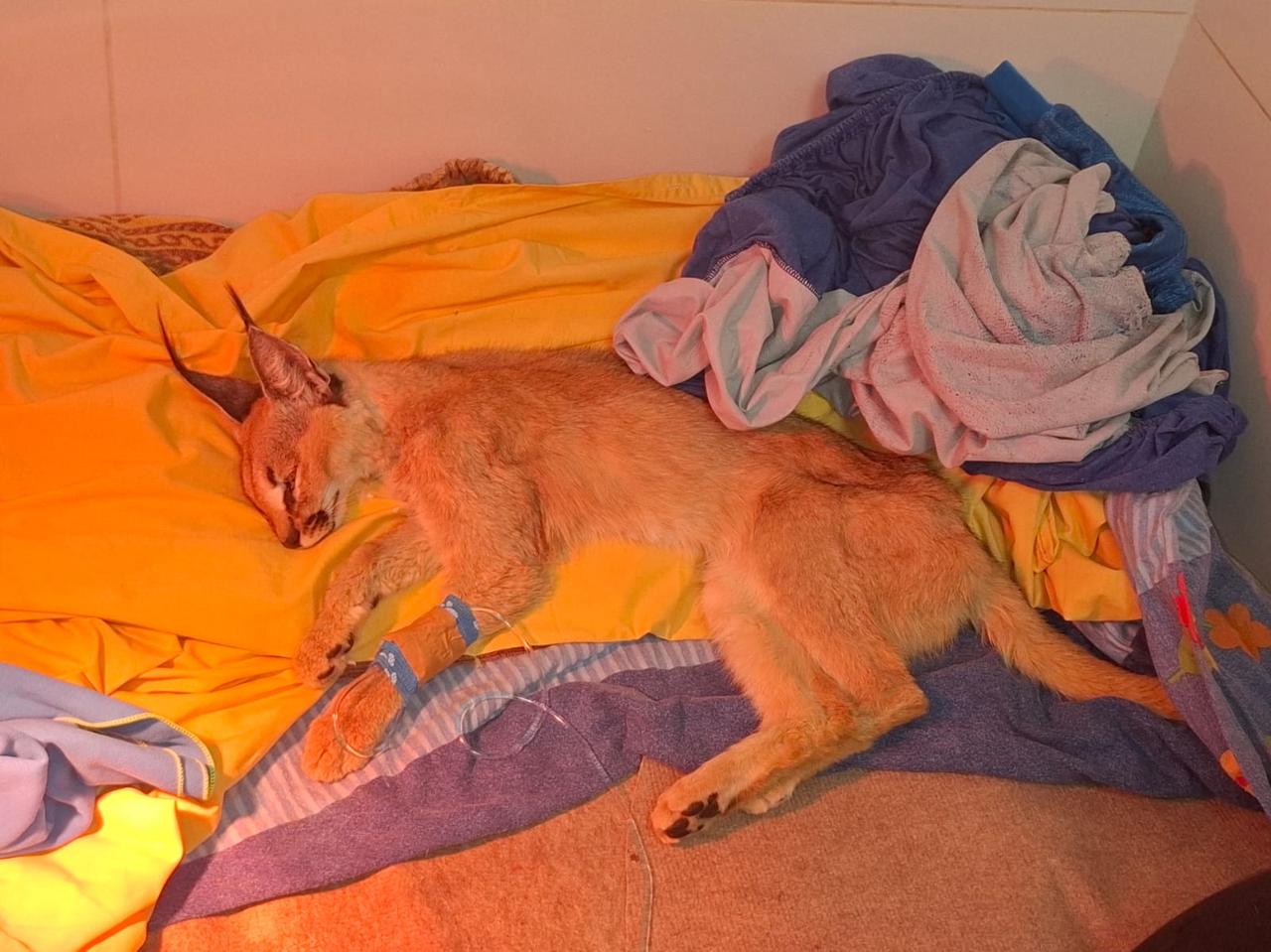
Official Israeli sources have announced the completion of procedures to release the “Egyptian caracal” back into the wild in the coming months, following a period of treatment and rehabilitation at specialized Israeli facilities.
The decision comes after a widely publicized incident last March, when the animal attacked a group of Israeli soldiers near the Egyptian border—an act that led many Egyptians to hail it as a “hero.”
The accident was that an Israeli female caracal was captured after biting several soldiers in the Mount Harif area near the Egyptian border. An inspector from the Israel Nature and Parks Authority caught the caracal, which was then transferred to a specialized wildlife hospital in Safari for examination. It is worth noting that the Israeli caracal is an endangered species.

According to a report published by the Israeli newspaper Yedioth Ahronoth, the 11-month-old caracal underwent a series of complex surgeries and an intensive rehabilitation program at the Wildlife Hospital run by the Israel Nature and Parks Authority. Israeli officials confirmed that the animal has fully regained its physical fitness and natural instincts.
The caracal is scheduled to be fitted with a high-tech tracking device ahead of its release in November, a date chosen due to the cooler weather and the animal’s full physical development. The release is expected to take place in a region near the Egyptian-Israeli border.
The original incident sparked widespread media attention in both Egypt and Israel. While the caracal was hailed as a “national hero” in Egyptian and Arab media, Israeli authorities approached the matter from a wildlife conservation perspective.
Dr. Tomer Nisimian, chief veterinarian at the Israel Nature and Parks Authority, explained that thorough examinations confirmed the animal’s ability to return to the wild. “We’ve made sure the caracal hasn’t become habituated to humans,” he said. “It now hunts independently—during rehabilitation, it managed to catch birds that entered its enclosure.”
Following widespread media coverage, thousands of users on X flooded the platform with the Arabic hashtag "The Egyptian Lynx," sparked by reports that mistakenly identified the animal as a lynx and suggested it may have come from Egypt—though this remains unverified.
Many Egyptians drew on cultural heritage, recalling the lynx’s revered status in ancient mythology as a symbol tied to the goddess Mafdet, famed for safeguarding against snakes and evil forces. This blend of modern social buzz and historical symbolism fueled a passionate online conversation.
The media is expected to continue following the caracal’s story even after its release into the wild. According to estimates, the caracal could be released into the wild near the Egyptian border around November, when temperatures drop slightly and it reaches full maturity. Dr. Nisimian added, “We know there are other caracals in the area, but we don’t have much data about the region. It will be fascinating to track her. Hopefully, we won’t run into her again.”